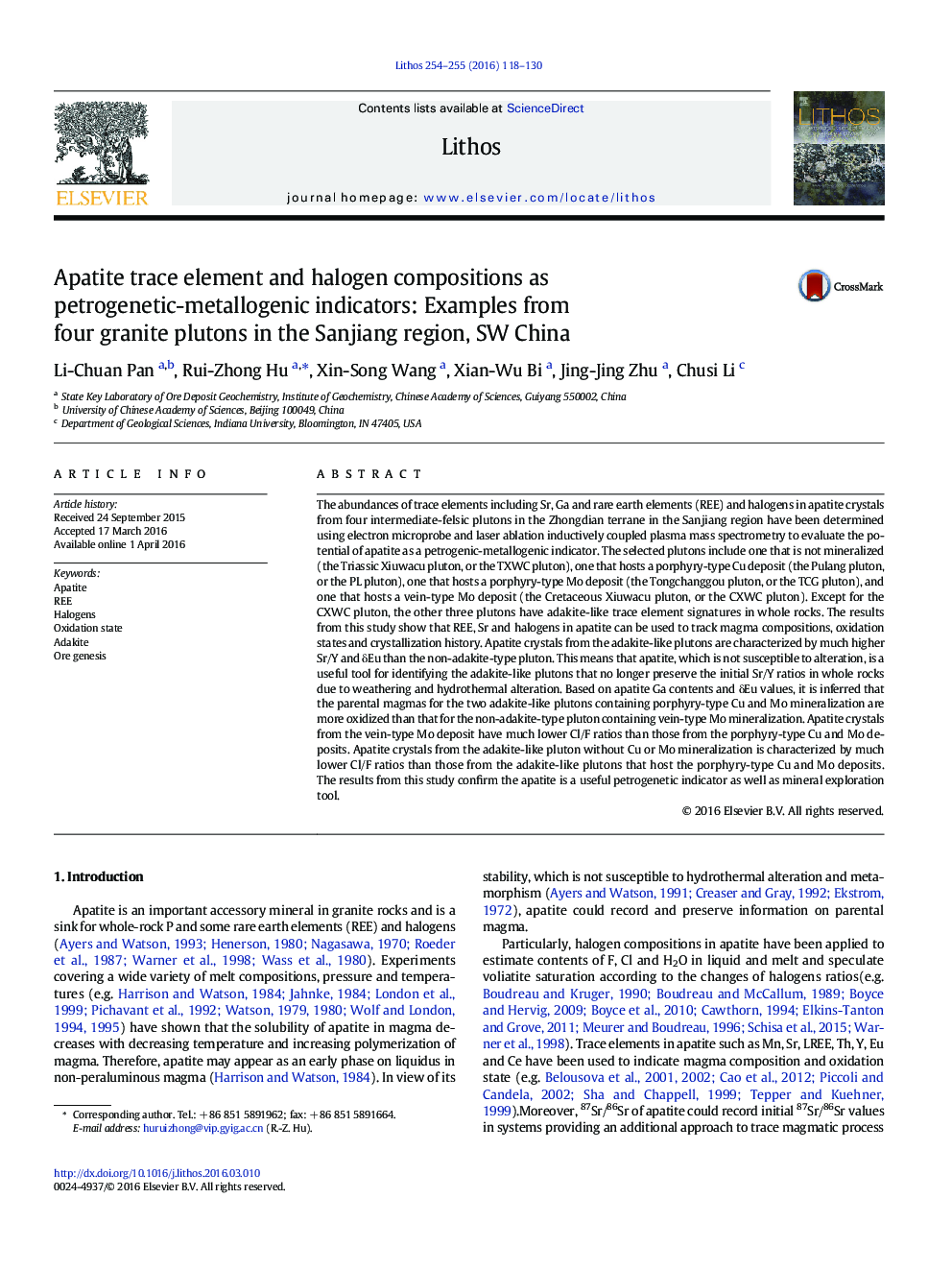| کد مقاله | کد نشریه | سال انتشار | مقاله انگلیسی | نسخه تمام متن |
|---|---|---|---|---|
| 4715515 | 1638647 | 2016 | 13 صفحه PDF | دانلود رایگان |

• Sr, REE and halogens in apatite can track magmas compositions and crystallization history.
• The positive correlation of Ga contents with Eu negative anomalies in apatite can indicate oxidation states of magmas.
• The combination of Sr/Y ratios and δEu in apatite can identify adakite-like plutons.
• Apatite compositions can reveal different magmatic conditions associated with porphyry-type Cu and Mo mineralization, vein-type Mo mineralization and barren mineralization.
The abundances of trace elements including Sr, Ga and rare earth elements (REE) and halogens in apatite crystals from four intermediate-felsic plutons in the Zhongdian terrane in the Sanjiang region have been determined using electron microprobe and laser ablation inductively coupled plasma mass spectrometry to evaluate the potential of apatite as a petrogenic-metallogenic indicator. The selected plutons include one that is not mineralized (the Triassic Xiuwacu pluton, or the TXWC pluton), one that hosts a porphyry-type Cu deposit (the Pulang pluton, or the PL pluton), one that hosts a porphyry-type Mo deposit (the Tongchanggou pluton, or the TCG pluton), and one that hosts a vein-type Mo deposit (the Cretaceous Xiuwacu pluton, or the CXWC pluton). Except for the CXWC pluton, the other three plutons have adakite-like trace element signatures in whole rocks. The results from this study show that REE, Sr and halogens in apatite can be used to track magma compositions, oxidation states and crystallization history. Apatite crystals from the adakite-like plutons are characterized by much higher Sr/Y and δEu than the non-adakite-type pluton. This means that apatite, which is not susceptible to alteration, is a useful tool for identifying the adakite-like plutons that no longer preserve the initial Sr/Y ratios in whole rocks due to weathering and hydrothermal alteration. Based on apatite Ga contents and δEu values, it is inferred that the parental magmas for the two adakite-like plutons containing porphyry-type Cu and Mo mineralization are more oxidized than that for the non-adakite-type pluton containing vein-type Mo mineralization. Apatite crystals from the vein-type Mo deposit have much lower Cl/F ratios than those from the porphyry-type Cu and Mo deposits. Apatite crystals from the adakite-like pluton without Cu or Mo mineralization is characterized by much lower Cl/F ratios than those from the adakite-like plutons that host the porphyry-type Cu and Mo deposits. The results from this study confirm the apatite is a useful petrogenetic indicator as well as mineral exploration tool.
Journal: Lithos - Volumes 254–255, June 2016, Pages 118–130